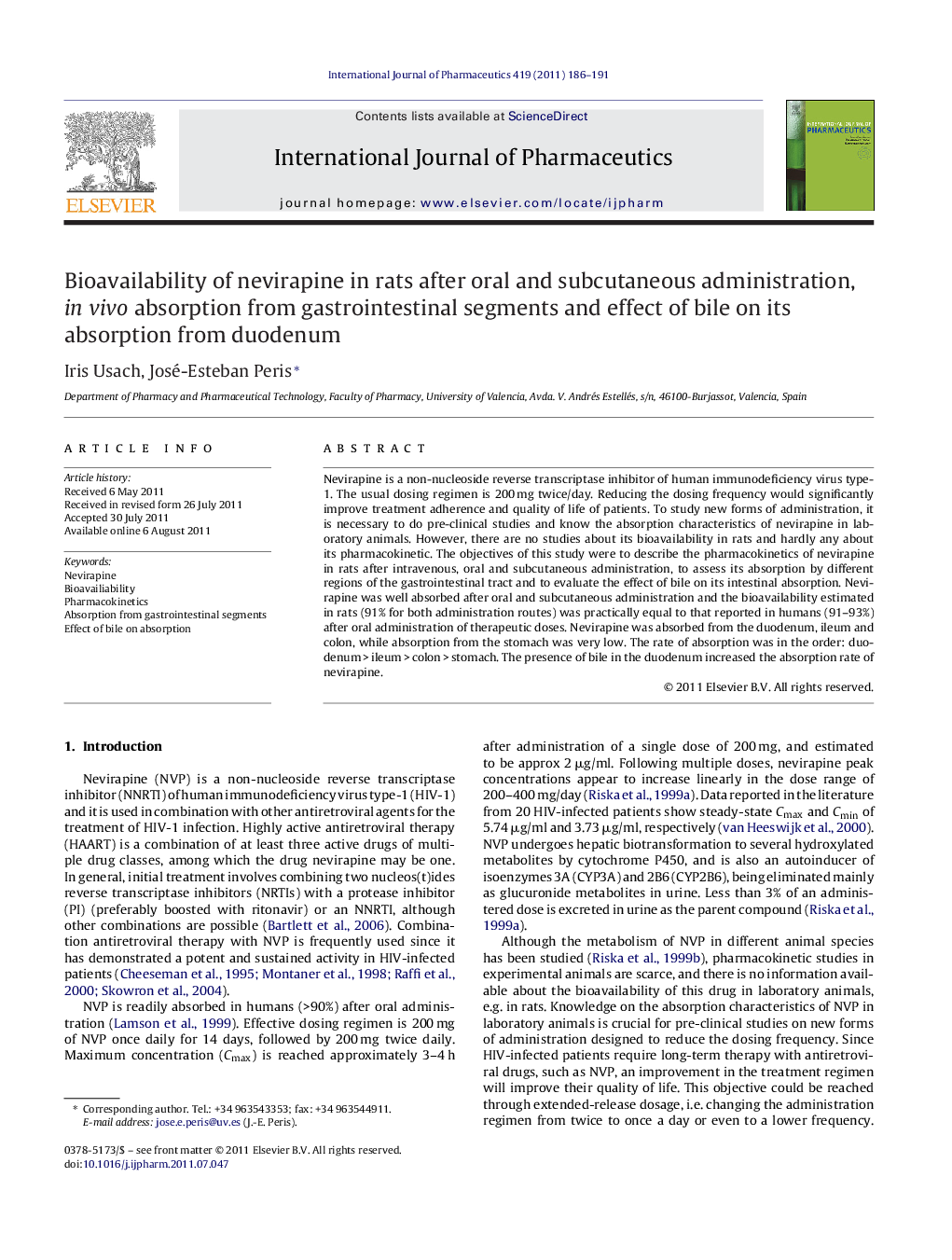| Article ID | Journal | Published Year | Pages | File Type |
|---|---|---|---|---|
| 2503301 | International Journal of Pharmaceutics | 2011 | 6 Pages |
Nevirapine is a non-nucleoside reverse transcriptase inhibitor of human immunodeficiency virus type-1. The usual dosing regimen is 200 mg twice/day. Reducing the dosing frequency would significantly improve treatment adherence and quality of life of patients. To study new forms of administration, it is necessary to do pre-clinical studies and know the absorption characteristics of nevirapine in laboratory animals. However, there are no studies about its bioavailability in rats and hardly any about its pharmacokinetic. The objectives of this study were to describe the pharmacokinetics of nevirapine in rats after intravenous, oral and subcutaneous administration, to assess its absorption by different regions of the gastrointestinal tract and to evaluate the effect of bile on its intestinal absorption. Nevirapine was well absorbed after oral and subcutaneous administration and the bioavailability estimated in rats (91% for both administration routes) was practically equal to that reported in humans (91–93%) after oral administration of therapeutic doses. Nevirapine was absorbed from the duodenum, ileum and colon, while absorption from the stomach was very low. The rate of absorption was in the order: duodenum > ileum > colon > stomach. The presence of bile in the duodenum increased the absorption rate of nevirapine.
Graphical abstractFigure optionsDownload full-size imageDownload as PowerPoint slide
